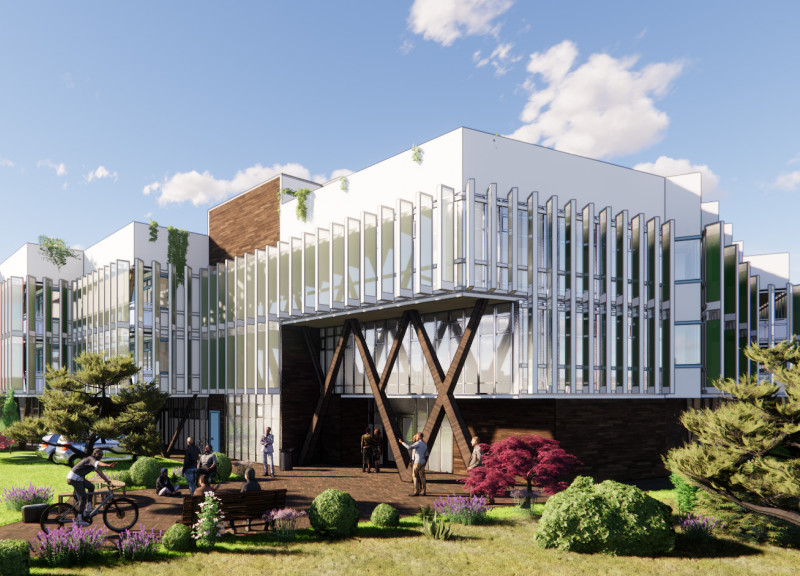5 key facts about this project
At its core, the project serves as a multi-purpose facility, accommodating various functions that cater to the community's needs. This versatility is reflected in the clear zoning of spaces, ensuring that public areas are separate from private ones, promoting accessibility and interaction. The layout encourages movement and flow, with open spaces fostering collaboration and social engagement among users. Each function—whether it be communal gathering, recreational activities, or administrative operations—is carefully considered, leading to a dynamic interplay of spaces that adapts to the varying demands of its users.
Materiality plays a significant role in the project, reinforcing its conceptual framework and contextual relevance. The use of locally sourced materials not only reduces the project's carbon footprint but also enhances its connection to the surrounding environment. The façade, characterized by a blend of textured concrete and natural timber elements, evokes a sense of warmth and permanence while ensuring durability and low maintenance. Large glazing panels facilitate natural light penetration, promoting energy efficiency and creating inviting interior spaces. This conscious choice of materials reflects an understanding of the local climate and cultural identity, further solidifying the project's place within its geographical context.
Particular attention has been paid to the landscape surrounding the building, which serves as both a buffer and a connector to the urban fabric. Green areas, planted terraces, and outdoor seating contribute to the overall ecological sustainability of the project while enhancing its aesthetic value. The landscaping not only provides recreational space but also creates a serene environment for contemplation and relaxation, encouraging users to engage with nature as part of their daily activities.
One of the most notable aspects of the design is its innovative approach to sustainability. The incorporation of renewable energy sources, such as solar panels and rainwater harvesting systems, illustrates a commitment to reducing environmental impact. Furthermore, the design promotes passive heating and cooling strategies through its orientation and strategic placement of windows, minimizing reliance on mechanical systems and lowering operational costs. This forward-thinking attitude towards sustainability aligns with current architectural trends that prioritize ecological responsibility alongside practical functionality.
The project further distinguishes itself through its unique design approaches, including the use of flexible spaces that can adapt to future needs. Movable partitions allow for the reconfiguration of interior spaces based on user requirements, fostering a sense of ownership and community involvement in the use of the facility. This aspect of adaptability is crucial in an ever-evolving urban context, where the needs of the community may shift over time.
As the project continues to stand out in both form and function, it invites exploration of its architectural plans, sections, and design ideas. A closer examination of these elements reveals additional layers of thought and intention, showcasing how architecture can respond meaningfully to societal needs while honoring environmental considerations. Readers are encouraged to delve deeper into the project's presentation for a comprehensive understanding of its unique architectural details and thoughtful design strategies.


























